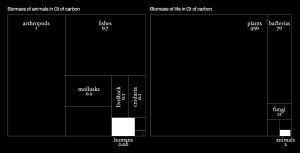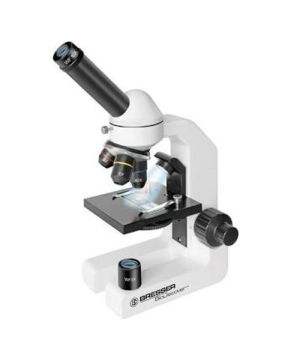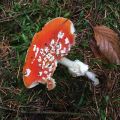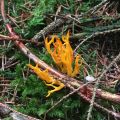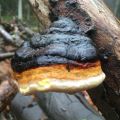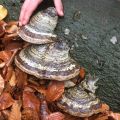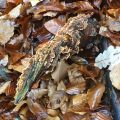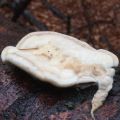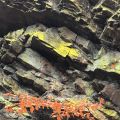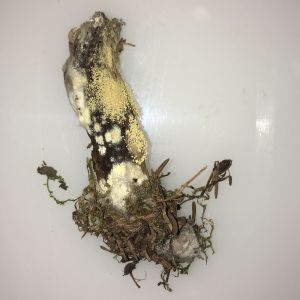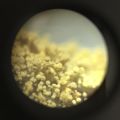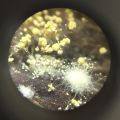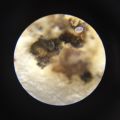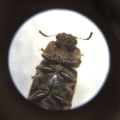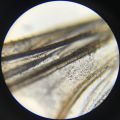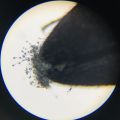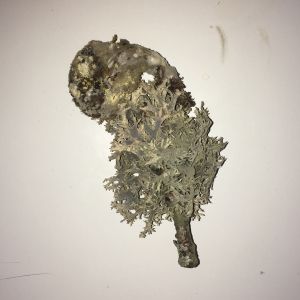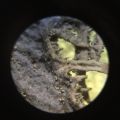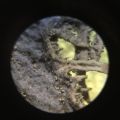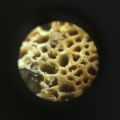Microscopic observation archives: Difference between revisions
| Line 94: | Line 94: | ||
***1 Acari sp. alive | ***1 Acari sp. alive | ||
*<b>20.04</b> — 20g extracted and mixed with 100g demineralised water: | |||
***First look right to left at 64x: no movement but lots of worm shaped things | ***First look right to left at 64x: no movement but lots of worm shaped things | ||
***Too much organic matter to get clear views: try with lower concentration | ***Too much organic matter to get clear views: try with lower concentration | ||
*<b>26.04</b> — 10g extracted for 110g demineralised water: | |||
***First yellow look right to left at 64x and 160x: no movement but good texture of organic matter | ***First yellow look right to left at 64x and 160x: no movement but good texture of organic matter | ||
***Second pink look random at 200x: lots of fungi bits and good bacterial aggregates | ***Second pink look random at 200x: lots of fungi bits and good bacterial aggregates | ||
==Notes== | ==Notes== | ||
Revision as of 16:40, 28 April 2021
By considering the biomass[1] and lifespan superiority of some microscopic beings in comparison to us human beings, we can look outside of our mammals’ bubble for a moment. Thus, we reach the bubble of decomposers, beings who make life on this planet possible, out of our sight. Without them, our world is rotten forever, since they recycle everything that was, once, alive. As well as pollinators allow plants to reproduce, decomposers transform organic matter in mineral food for plants, the basic trophic level of most ecosystems.
They are everywhere, and we domesticated some of them to produce our own food, from cheese to bread and wine. However, as apex predators, we exist only because they sustain themselves since millions of years.
Characteristics of the microscope used for this exploration:
- Type: Biological-/ Stereo-type microscope
- Model: BRESSER BioDiscover
- Year of production: 2007
- Magnification table:
| Eypiece | Objective | Magnification | with Barlow lens |
|---|---|---|---|
| 5x | 4x | 20x | 40x |
| 5x | 10x | 50x | 100x |
| 5x | 40x | 200x | 400x |
| 16x | 4x | 64x | 128x |
| 16x | 10x | 160x | 320x |
| 16x | 40x | 640x | 1280x |
November 2020 | Blue Ardenne collect

| Context of collect | Date of collect | Date of observation | Items observed |
|---|---|---|---|
| Hike in the Blue Ardenne | 16th of November 2020 | January 2021 | Fungi[2] and small animals crawling in samples. |
Observations made while hiking
| Amanita muscaria | Clavulinopsis aurantiocinnabarina | Fomes fomentarius old | Fomes fomentarius young | Polyporaceae corda | Meruliaceae | Hypoxylaceae |
Fungi (mycelium organ) grown on mushroom
| Hypoxylacae conidium | Hypoxylacae and Penicillium conidiums | Tyrophagus putrescentiae | Tenebrionidae family | Beetle wing | Fungi on beetle |
Lichen [3]
| Evernia genus lichen | Evernia genus lichen | Mushroom alveolar gills |
April 2021 | Hoeve de Koeberg soil analysis
| Context of collect | Date of collect | Date of observation | Items observed |
|---|---|---|---|
| Soil analysis of milk providers: 1 hectare grassland next to the farm's main barn | 19th of April 2021 | April 2021 | Microscopic fungi and animals, macroscopic insects [2] and small animals crawling in samples. |
16 small 10cm deep samples with trowel around the whole 1ha pasture
- 20.04-26.04 — Samples bend together in plastic bag for a total of 1kg
- All macro-animals out of the total:
- 3 cuts of medium earthworms, 2 blacks 1 white (anecics species?)
- 1 cut of small earthworm (epigeic species?)
- 2 small earthworms alive, brown and pinkish (epigeic species?)
- 1 small short earthworm alive (or medium cut?)
- 1 Acari sp. alive
- All macro-animals out of the total:
- 20.04 — 20g extracted and mixed with 100g demineralised water:
- First look right to left at 64x: no movement but lots of worm shaped things
- Too much organic matter to get clear views: try with lower concentration
- 26.04 — 10g extracted for 110g demineralised water:
- First yellow look right to left at 64x and 160x: no movement but good texture of organic matter
- Second pink look random at 200x: lots of fungi bits and good bacterial aggregates
Notes
- ↑ See the article The biomass distribution on Earth, Yinon M. Bar-On, Rob Phillips, Ron Milo. Proceedings of the National Academy of Sciences Jun 2018, 115 (25) 6506-6511; DOI: 10.1073/pnas.1711842115. source: https://www.pnas.org/content/115/25/6506
- ↑ 2.0 2.1 Identified when possible with the help of internet ressources (Wikipedia and The Mushroom Observer or others).
- ↑ Composite organism made of algae/cyanobacteria living among filaments of fungi.
